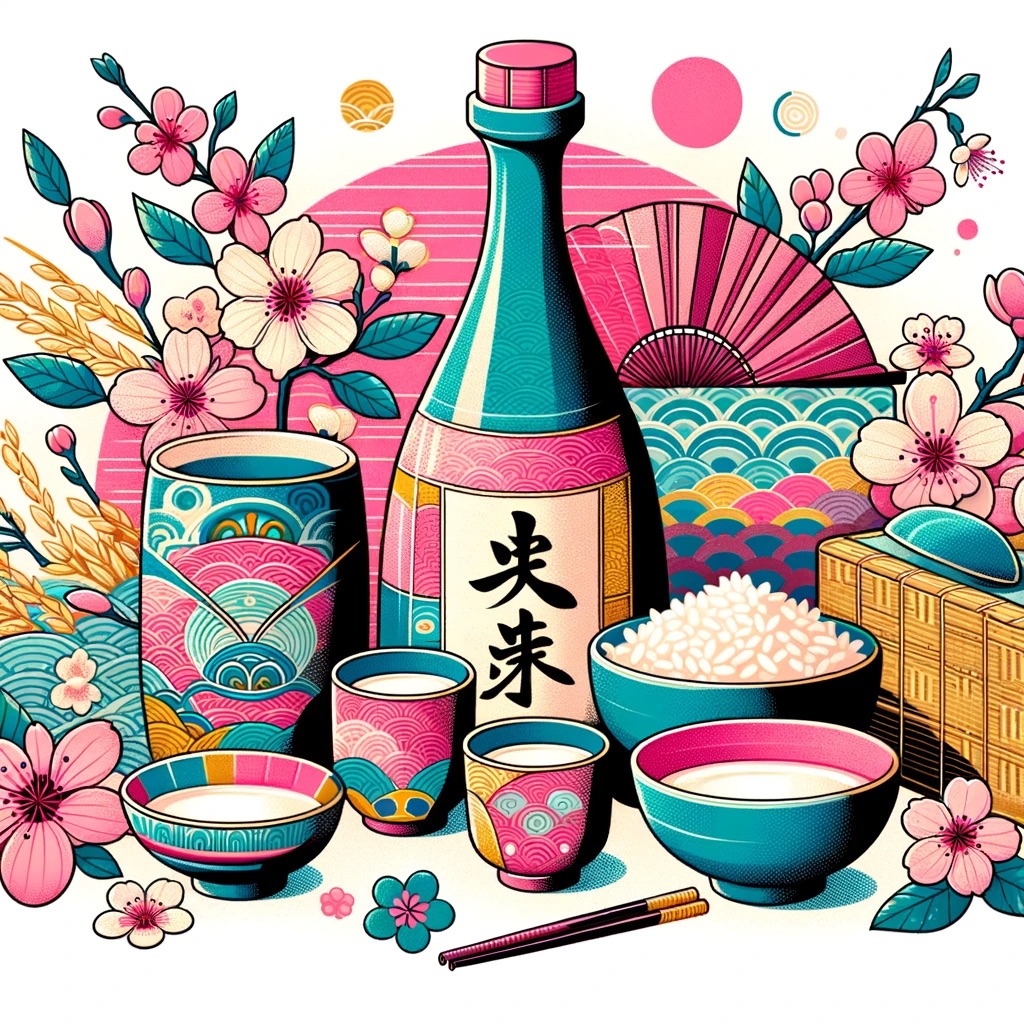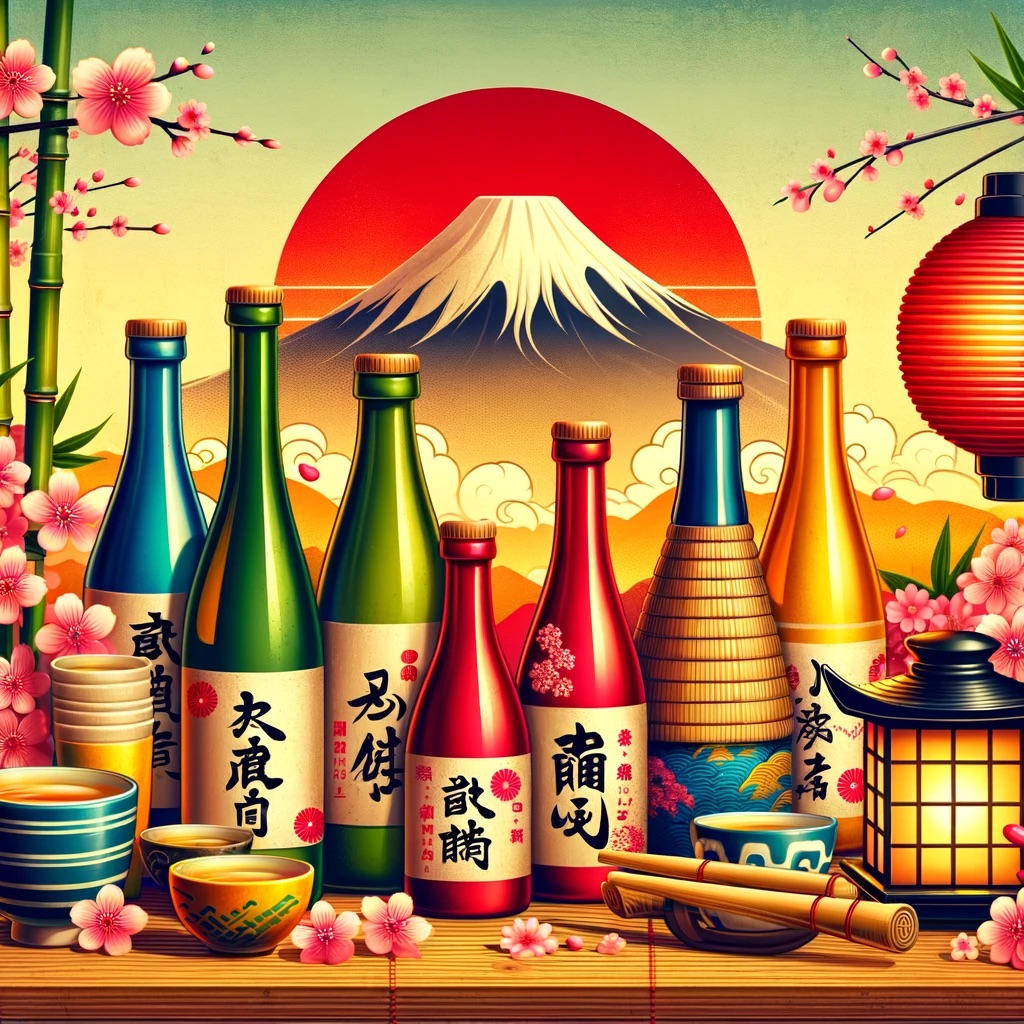From Beginner to Advanced: Enjoying, Storing, and Pairing Secrets of Sake

Are you interested in enjoying sake but unsure where to start or how to fully appreciate it? This article comprehensively explains everything you need to expand your world of sake, from basic knowledge and selection to enjoyment and storage methods. Readers will understand the rich history and culture of sake, learn how to enjoy it at home, pair it with food, and store it properly, gaining the knowledge and confidence to deeply savor sake.
Introduction to Sake
Sake is a traditional Japanese brewed alcohol made primarily from rice and water. The manufacturing process of sake involves fermenting rice to produce alcohol. This process undergoes a two-step conversion, where the starch in the rice is turned into sugar, and then yeast converts the sugar into alcohol. This distinctive method of production creates the unique taste and aroma of sake. It is somewhat similar to the process of baking bread, where yeast is used to break down sugars, producing carbon dioxide that makes the bread rise. In sake production, yeast breaks down sugar to produce alcohol. Sake comes in a wide variety of types, each with its own flavor, aroma, and color.
The manufacturing process of sake involves the following key stages
The sake brewing process is intricate, starting with the selection of rice, followed by polishing, washing, soaking, steaming, adding yeast, fermenting, pressing, aging, and bottling. Each step directly impacts the quality of sake, producing specific tastes and aromas. For instance, polishing rice (seimai) removes excess fats and proteins, allowing for a purer starch-based fermentation, similar to how grinding coffee beans affects the flavor of coffee. The degree of rice polishing can significantly alter the flavor profile of sake. The sake brewing process is an art that reflects the traditions, techniques, and philosophy of the brewer.
For detail.
- Rice Selection and Preparation: Selecting an appropriate variety of rice, which is then polished to remove the outer bran. The degree of polishing affects the flavor and quality of the sake; more polished rice typically results in a lighter and more refined taste.
- Washing and Soaking: The polished rice is washed and then soaked in water. The soaking time varies depending on the type of sake being produced.
- Steaming: After soaking, the rice is steamed. This step is crucial for making the rice’s starches accessible to the koji mold, which will convert them into sugars.
- Koji Making: Some of the steamed rice is spread out to cool and then sprinkled with koji mold spores. The rice is kept in a warm, humid environment to allow the koji mold to grow, breaking down the rice’s starches into sugars.
- Fermentation: The koji rice, remaining steamed rice, water, and yeast are mixed together in a tank to start the fermentation process. This mixture, called “moto,” is left to ferment, with additional rice, koji, and water added in stages. This step can last from a few weeks to a month, during which the yeast converts the sugars into alcohol.
- Pressing: Once fermentation is complete, the mixture is pressed to separate the liquid sake from the rice solids.
- Filtration and Pasteurization: The sake is then filtered to remove any remaining solids and often pasteurized to stop fermentation and stabilize its flavor.
- Aging: Finally, sake is aged for several months to allow its flavors to mature and meld before bottling.
Each step in the process is carefully controlled to influence the final taste, aroma, and quality of the sake, making it a deeply cultural and artisanal craft.
Enjoying and drinking sake
The flavor of sake can significantly change with temperature, allowing for enjoyment from chilled to warm (hot sake). The components of sake react differently at various temperatures, altering the aroma and intensity of flavors. For example, chilling can enhance fruity aromas, while warming can bring out the richness and depth of the rice. This is similar to enjoying coffee both iced and hot, where temperature changes offer different tasting experiences. Experimenting with sake at various temperatures to find your preferred way to enjoy it is part of the fun.
Pairing with food
Sake is not only compatible with Japanese cuisine but also pairs well with a variety of dishes, including cheese and Italian food. This versatility is due to the amino acids in sake, which enhance the umami of foods. Junmai (pure rice sake) and ginjo (premium sake made with highly polished rice) varieties, in particular, can easily leverage this characteristic. Just as wine pairs well with cheese, sake can similarly complement different ingredients, offering the opportunity to enjoy a range of food combinations. Experimenting with sake and food pairings can lead to the discovery of new and delightful flavors.
Sake by region
Each region of Japan has its own unique sake, influenced by the quality of water, climate, and local rice varieties. These regional characteristics impart distinctive individualities to each sake, much like how French wines vary by their origins. Exploring regional sakes allows for a deeper understanding of the culture and nature of each area, revealing how local conditions shape the flavor and personality of these traditional beverages.
FAQ
I have compiled a list of frequently asked questions here.
Visual content
Conveying the allure of sake through visual content can be incredibly effective. Visual information helps intuitively understand aspects of sake that are difficult to communicate through text or numbers alone, such as its color, texture, and the beauty of its manufacturing process. For instance, videos and photographs capturing the sake brewing process can visually communicate its complexity and the craftsmanship involved. Just as watching a chef cook in a culinary show adds to the enjoyment, visually experiencing the process of sake making deepens the appreciation of its charm. By providing a wealth of visual information, readers can feel closer to the world of sake, gaining a more intimate and vivid understanding of its cultural and artisanal significance.
Experiences and interviews
Publishing personal experiences and interviews with experts can provide additional value to readers interested in sake. Stories from frontline sake brewers and critics offer deep insights and behind-the-scenes looks that captivate readers’ interests. This information, based on real-life experiences, can lead to new discoveries and learning opportunities. Just as articles featuring famous wine critics sharing their favorite wines are popular among wine enthusiasts, content spoken by sake experts holds similar allure. Through these testimonies and interviews, readers can gain a more concrete understanding of the diversity and complexity of sake, enhancing their appreciation and knowledge of this traditional Japanese beverage.
Practical tools and information
Providing tools and information that assist in selecting sake can enhance readers’ experiences with this beverage. Practical advice on choosing sake, pairing it with food, and storage methods can alleviate beginners’ anxieties and help make more informed choices. Similar to using reviews on online shopping sites to select products, having tools and resources for choosing sake makes it easier for readers to find the right fit for their tastes. By offering practical tools and information, readers can deepen their knowledge about sake and make selections with confidence. This support not only enriches the sake drinking experience but also empowers individuals to explore the diverse world of sake with greater ease and enjoyment.
Sake purchasing guide
Offering a beginner’s guide to purchasing sake is crucial due to the wide variety of sake available, which can make it challenging for newcomers to know what criteria to use when choosing. A purchase guide provides concrete information helpful for buying, such as price range, taste type, and recommended sake breweries. Just as travel guidebooks assist in choosing tourist destinations, a sake purchasing guide serves as a compass to navigate through the diverse options and find the bottle that best suits one’s preferences. By providing an easy-to-understand guide for beginners, the barrier to selecting sake is lowered, creating an environment where one can enjoy learning while exploring the world of sake.
Storage and management
Knowing the proper storage methods for sake is crucial to maintain its quality. Sake is sensitive to light and temperature changes, and improper storage conditions can deteriorate its flavor. Storing sake in a cool, dark place is key to enjoying it in the best condition. Just as care is taken to store wine to protect its flavor, sake also needs to be stored properly to preserve its taste. For example, special attention to temperature control is particularly important for pure rice sake (junmai) and unpasteurized sake (namazake). By sharing knowledge on the storage and management of sake, readers can enjoy sake at home in good condition for a longer period.
The future of sake
Exploring the latest trends and future predictions in the sake industry can uncover new attractions of sake. With the rising popularity of craft sake and increased awareness of sake internationally, the industry is constantly evolving. Understanding these trends allows for a reevaluation of sake’s potential and the discovery of new ways to enjoy it. Similar to how craft beer has garnered attention worldwide, sake is also gaining new enthusiasts through diverse brewing methods and flavors. By including a section on the future of sake, readers can gain insight into industry trends and new appeals, fostering a deeper interest in sake. This approach not only educates but also excites readers about the dynamic world of sake and its place both in Japan and globally.

